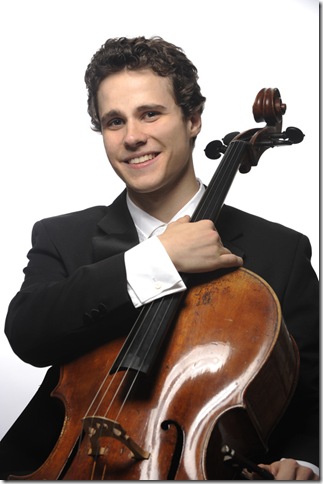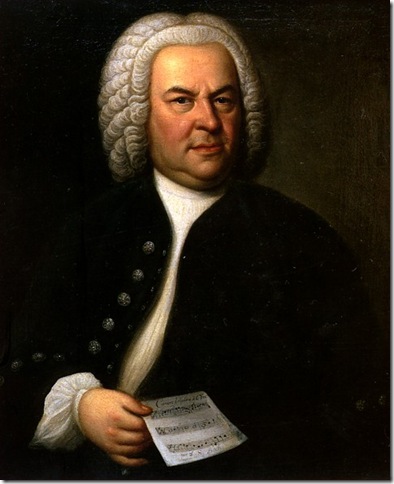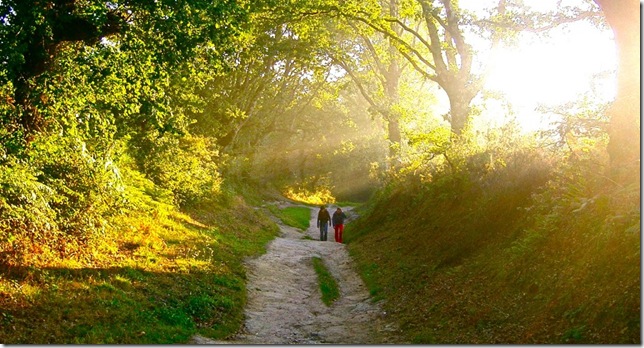One of Dane Johansen’s paternal ancestors helped oversee the transition of Alaska from czarist Russia to the United States in the late 19th century, and having grown up in Fairbanks as a sixth-generation resident of the Last Frontier, Johansen has been looking for a way to marry his love and knowledge of the outdoors with his career as a cellist.
He appears to have found it: Next week, Johansen sets out on the Camino de Santiago, the 600-mile trail in northern Spain traveled for centuries by pilgrims heading to city of Santiago de Compostela, and a road which was used for millennia before that as a path to the Fisterra peninsula, which ancient humans thought of as the literal end of the earth.
But he isn’t going as a religious pilgrim, nor is he in it just for the exercise. He’ll be bringing his cello with him — in a special extra-light carbon-fiber case — as he walks the trail, and will stop in 36 churches along the way for the chief purpose of his walk: performing the six cello suites of J.S. Bach, probably the nearest thing cellists have to a sacred text.
By the end of his trip, called The Walk to Fisterra, at the end of June, he’ll have played each of the suites 18 times, in the home country of Pablo Casals, the cellist who rediscovered these great 300-year-old pieces in a Barcelona music shop more than a century ago and did more than anyone else to establish them in their proper place as bulwarks of the literature. [Here is a performance of the prelude from the Third Suite.]
“For all cellists, the Bach cello suites are sort of a lifelong quest, or at least for any cellist who chooses to take that path. When I play Bach’s music, it’s definitely the closest I get musically to some kind of meditation or prayer-like state,” Johansen said, speaking Sunday night from his home in New York. “It’s such a personal thing, playing Bach’s music. Developing an interpretation is something that happens really slowly and very naturally, because you just play them and play them and play them, and they reveal more and more of their secrets to you.”
On Wednesday, Johansen will be at Palm Beach’s Café Boulud, where the Chamber Music Society of Palm Beach will be holding a fundraiser for his trip. It’s about 65 percent funded on Kickstarter (the deadline is the 13th), and Johansen is still working to raise more money for the expedition. He’ll be accompanied by six other people — a producer, production assistant, two videographers and two audio engineers — who will be filming his journey and recording the music for future release as a documentary and a record.
“We’ve planned 36 concerts along the way, and they will all be recorded in 5.1 surround sound. And we’re hoping that the recording will help listeners experience the spaces as well,” he said. “If you’re listening to the recording later, you’ll feel as though you’re in that particular venue. And with the film aspect of this project, when you hear this music in the film, you’ll be looking at the space that you’re hearing, and so you’ll kind of be transported there visually and sonically.”
Johansen, the son of a civil engineer and a violin teacher, studied in his high school and undergraduate years at The Cleveland Institute of Music, following that with a year and a half at the Conservatoire National Superieur de Paris, and finally getting his master’s and a performer’s certificate at the Juilliard School, where he now teaches as an assistant to the eminent American cellist Joel Krosnick and in the school’s pre-college division.
Johansen is also the cellist in the young Escher Quartet, which plays tonight on Julian Kreeger’s Friends of Chamber Music of Miami series in Coral Gables with the fine young British pianist Benjamin Grosvenor in music of Dvořák and Dutilleux. The group will be releasing discs this year of the complete Mendelssohn quartets (on Bis, the Swedish label), and the four quartets of the Mahler acolyte Alexander von Zemlinsky (on Naxos).
On his own, Johansen performed Elliott Carter’s Cello Concerto for his Lincoln Center debut in 2008, and in 2011, gave the New York premiere of the Crouching Tiger Concerto compiled by Chinese composer Tan Dun from his score for the 2000 Ang Lee film Crouching Tiger, Hidden Dragon. In addition to his global appearances with the Escher Quartet, he has performed in elite series such as the Chamber Music Society of Lincoln Center and the Marlboro Music Festival of Vermont.
Johansen said he first came up with the idea for the walk in 2008, thinking he would walk the trail with his cello by himself. He had gotten the inspiration from a composer friend who had walked the Appalachian Trail and had written a good deal of music while on the journey.
But the Appalachian Trail is largely wilderness, and while that was fine for the solitary occupation of composing, Johansen wanted to make a Bach journey on a more populated route. Taking the Camino de Santiago not only puts him in the same steps as the pilgrims who began using it in earnest in the early 12th century, it also allows him to reach out to any number of contemporaries who happen to be there, and not only the young musicians from four Spanish conservatories with whom he’ll be doing some educational outreach on the trip.
“Everybody who walks the Camino walks that route with their own story and for their own reasons,” said Johansen, who will turn 30 in June while he’s on the road. “And I think that this music will help elevate their experience. Whatever their reason for walking the Camino, I think that there will be people sharing that experience with me that will be happier for the music, and who will enjoy their experience more for the music,” he said.
Johansen, who has been breaking in his Vasque hiking boots for the past few weeks, will be staying each night of the six-week journey in one of the many refugios on the path, though he added that some members of the production team may have to stay elsewhere from time to time for technical duties such as data downloads. His cello case, made by Germany’s Musilia, is a special reflective white to keep the heat to a minimum for his custom cello, built for him in 2011 by the New York-based luthier Stefan Valcuha.
Johansen said the origin of the Bach suites themselves are as shrouded in mystery as the pre-pilgrimage Camino. Most scholars believe the music to have been written before 1720, but the original manuscript is lost, and while the first five suites were written for the cello, the sixth one was written for a related five-string instrument of uncertain specificity. That doesn’t change the power of the music, which Johansen says he never tires of.
“When people ask me what my desert island book of music would be, it’s always the Bach suites because I never get tired of them,” he said. “I play them every day — not all of them every day — but I play Bach’s music every day, and I never get sick of it.”
His current favorite of the suites is the fifth one (in C minor, BWV 1011), and says the sarabandes of each of the suites are their spiritual centers.
“What he’s writing is at once really complex but also very simple … I like to try to figure out what was the idea that Bach was playing with in this movement. It seems to me that most of the movements have kind of a central concept that he must have been playing with. It could be something as simple as up and down, or stop and start, or push and pull.
“So I like to approach them in that way: What could he have been thinking with this material? What is this about?” he said. “I really don’t try to make them my own, because just by playing them, they’re my own … Every time I play them, I experience them as a new thing, like it’s the first time, and that’s something really special, something I don’t experience with any other composer or any other canon of music.”
Bringing something of that artistic journey to a completely new audience is vital not only for the Camino walk, but for being a performer in general, he said.
“I think as an artist when you’re taking on any kind of project, you have to make sure that your focus is outward, and that you’re trying to do something good for the world with your project,” Johansen said. “It’s ridiculous to say that an artistic project is not about the artist, because it’s impossible. You’re not going to have a meaningful product, or a meaningful experience, if someone hasn’t invested all of themselves.
“But the focus of all that energy can’t be inward. It has to be outward, and for me, that’s sharing this music with as many people as I can.”
***
Dane Johansen will perform Wednesday evening at Café Boulud, which is in the Brazilian Court Hotel at 301 Australian Ave. on Palm Beach. The performance sponsored by the Chamber Music Society of Palm Beach will begin with cocktails at 6 p.m., followed by the concert at 7 p.m. Tickets are $125. Call 561-379-6773 or visit www.cmspb.org.
The Kickstarter page for the Walk to Fisterra project can be found here, and he’s also taking donations on Fractured Atlas. In addition, Johansen will be chronicling the journey on Facebook, Twitter, Instagram and Reddit as well.
Johansen also plays tonight with the Escher String Quartet and pianist Benjamin Grosvenor at the Friends of Chamber Music of Miami series, which will be held at the University of Miami’s Gusman Hall. Tickets for that performance are $35. Call 305-854-3019 or visit www.miamichambermusic.org.


